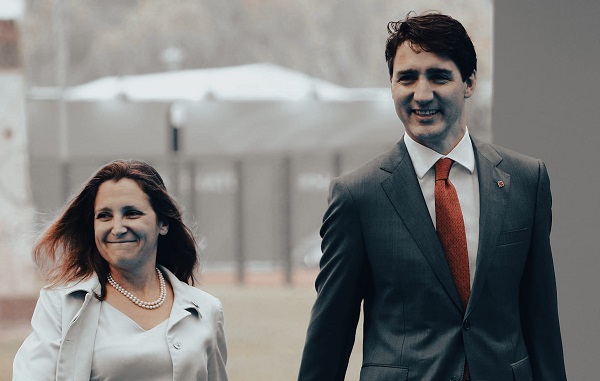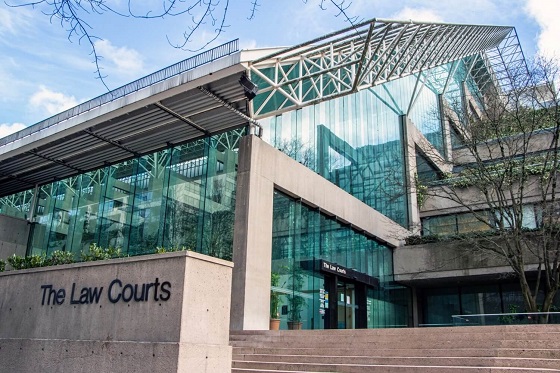Business
Taxpocalypse 2025: Trudeau Rings in the New Year with Higher Taxes and Empty Wallets

Taxpayer Federation’s report reveals how Trudeau’s government is using new taxes to crush the middle class, fund wasteful projects, and expand a bloated bureaucracy while Canadians struggle
When the clock strikes midnight, it won’t just be the start of 2025—it’ll mark the beginning of Taxpocalypse 2025, a year where Justin Trudeau’s government will hit the middle class harder than ever before.
The Canadian Taxpayers Federation has released a report that lays bare the financial storm Canadians are about to endure. It’s not just inflation draining your wallet; it’s an avalanche of new taxes designed to fund Trudeau’s bloated government and its endless corruption. Let’s go through the numbers, because you deserve to know what’s really happening.
First, payroll taxes are going up. If you earn $81,200 or more, you’ll be paying $403 more in Canada Pension Plan and Employment Insurance contributions this year. Your employer will also fork out nearly $6,000 per employee. Small businesses—already struggling with inflation and high costs—are being crushed under this weight. This isn’t job creation; it’s job destruction.
Then there’s the carbon tax. Starting tomorrow, it jumps from $80 per tonne to $95, adding 20.9¢ per litre to the cost of gasoline. Filling up a 70-litre tank will now cost you almost $15 in carbon taxes alone. If you heat your home with natural gas, get ready to pay an additional $415 this year. Trudeau claims this is about fighting climate change, but in reality, it’s just another excuse to fill government coffers.
And if you thought inflation was bad, bracket creep makes it worse. As your income grows slightly due to inflation, you’re pushed into higher tax brackets without actually having more buying power. So, you’ll pay more in income tax on money that doesn’t go as far as it did last year. Meanwhile, the wealthy use loopholes to avoid taxes, and the poor get targeted rebates. Once again, it’s the middle class holding the bag.
Don’t believe me about how bad things have gotten under Trudeau? Let’s talk inflation—specifically food inflation. Here are the year-over-year increases:
- 2021: 4.0% (September)
- 2022: 11.0% (October)
- 2023: 8.3% (June)
- 2024: 2.7% (October)
Now, let’s compound that year over year. Since 2021, food prices have soared 28.37%. Think about that—almost a third of your grocery budget wiped out. A dollar that used to buy a loaf of bread now barely buys three-quarters of one. And this year, Trudeau’s new taxes will take even more out of your wallet.
But while you’re paying more for less, Trudeau has been busy inflating something else: the federal public service. Since he took office in 2015, he has added 108,793 new public servants to the federal payroll—a 42% increase in the size of the federal public service. And for what? Are hospitals better staffed? Are services more efficient? Absolutely not. Wait times for healthcare are worse than ever. Infrastructure projects are endlessly delayed.
I’m an independent Canadian journalist exposing corruption, delivering unfiltered truths and untold stories. Join me on Substack for fearless reporting that goes beyond headlines
If you ask me, Trudeau bloated the public sector to artificially keep unemployment numbers down. Let’s be clear: it’s the private sector that provides for the public sector, not the other way around. Every new bureaucrat added to the payroll is funded by taxes from hardworking Canadians—people like you—who are already struggling to make ends meet.
So, under Trudeau, you’re paying more for groceries, more in taxes, and getting less in return. This isn’t governance; it’s theft. But here’s the real insult: all of this money is going to fund Trudeau’s swamp of waste and corruption. Take the ArriveCAN app, a disaster that cost $54 million—for what? A glorified QR code. Contracts were handed out to insiders, many of whom didn’t even do any work.
Then there’s the Green Slush Fund, which has wasted nearly $400 million on pet projects rife with conflicts of interest. Liberal insiders funneled taxpayer money into their own businesses, and Trudeau’s government just shrugged.
The alcohol escalator tax is going up too, adding 2% more to the already sky-high taxes on beer, wine, and spirits. And don’t forget the digital services tax, a 3% levy on platforms like Amazon and Netflix. Experts say most of this cost will be passed directly to consumers.
Final Thoughts
This is Justin Trudeau’s Canada: a nation where the poor are shielded, the rich find their loopholes, and the middle class—the backbone of this country—is bled dry. Payroll taxes, carbon taxes, alcohol taxes, income taxes—it’s all part of an elaborate scheme to fund the bloated vanity projects and corruption of a government that no longer even pretends to care about the people footing the bill.
And while Canadians are working longer hours to afford less, struggling to put food on their tables, start families, or even dream of owning a home, Trudeau jet-sets around the world like royalty. Whether it’s sipping top-shelf wine at a global summit or skiing the pristine slopes of Red Mountain, this guy lives like a king while the rest of you pick up the tab.
It’s no wonder Canadians are booing him in public—it’s not only justified, it’s well deserved. He’s earned every jeer, every shout of frustration, because his leadership has failed this country at every turn. Under Trudeau, affordability has become a joke, and hard work no longer guarantees success.
But here’s the best part, Justin: there’s an election this year. Canadians finally get the chance to tell you exactly what they think of your disastrous leadership. They’ll send your Liberal ship straight into the iceberg, where it belongs.
So, go ahead, call the election. Take the globalist agenda you’ve been so proud to champion, pack it up with your carbon-tax hypocrisy, and prepare for your next gig as a keynote speaker for the World Economic Forum. You’ve proven you’re great at reading from a script that someone else writes—just not at running a country.
Enjoy your top sirloin tonight, Justin. Canadians? They’ll be eating Kraft Dinner while watching your government fall apart. Happy New Year. And Canada, don’t forget: Taxpocalypse 2025 starts tomorrow. Let’s make it the year we take our country back.
Invite your friends and earn rewards
Business
Stripped and shipped: Patel pushes denaturalization, deportation in Minnesota fraud

FBI Director Kash Patel issued a blunt warning over the weekend as federal investigators continue unraveling a sprawling fraud operation centered in Minnesota, saying the hundreds of millions already uncovered represent “just the tip of a very large iceberg.”
In a lengthy statement posted to social media, Patel said the Federal Bureau of Investigation had quietly surged agents and investigative resources into the state well before the scandal gained traction online. That effort, he said, led to the takedown of an estimated $250 million fraud scheme that stole federal food aid intended for vulnerable children during the COVID pandemic.
According to Patel, the investigation exposed a network of sham vendors, shell companies, and large-scale money laundering operations tied to the Feeding Our Future case. Defendants named by the FBI include Abdiwahab Ahmed Mohamud, Ahmed Ali, Hussein Farah, Abdullahe Nur Jesow, Asha Farhan Hassan, Ousman Camara, and Abdirashid Bixi Dool, each charged with offenses ranging from wire fraud to conspiracy and money laundering.
Patel also said Abdimajid Mohamed Nur and others were charged in a separate attempt to bribe a juror with $120,000 in cash. He noted that several related cases have already resulted in guilty pleas, prison sentences of up to 10 years, and nearly $48 million in restitution orders.
Despite those outcomes, Patel warned the case is far from finished.
“The FBI believes this is just the tip of a very large iceberg,” he said, adding that investigators will continue following the money and that the probe remains ongoing. Patel further confirmed that many of those convicted are being referred to immigration authorities for possible denaturalization and deportation proceedings where legally applicable.
The renewed focus follows a viral video circulated by independent journalist Nick Shirley, which appeared to show multiple childcare and learning centers operating as empty or nonfunctional storefronts. The footage sparked immediate backlash from Republicans, including Vice President JD Vance.
House Majority Whip Tom Emmer accused Minnesota Gov. Tim Walz of sitting idle while massive sums were stolen from taxpayers. Walz addressed the allegations during a November press conference, before the full scope of the fraud became public, saying the scandal “undermines trust in government” and threatens programs meant to help vulnerable residents.
“If you’re committing fraud, no matter where you come from or what you believe, you are going to go to jail,” Walz said at the time.
Authorities say the alleged schemes date back to at least 2015, beginning with overbilling Minnesota’s Child Care Assistance Program and later expanding into Medicaid-funded disability and housing programs. One such housing initiative, aimed at helping seniors and disabled residents secure stable housing, was shut down earlier this year after officials cited what they described as large-scale fraud.
The fallout has already reached the federal level. Last month, President Trump announced the suspension of Temporary Protected Status for Somali nationals, arguing that Minnesota had become a hub for organized welfare fraud and money laundering activity.
Business
Mainstream media missing in action as YouTuber blows lid off massive taxpayer fraud

Vice President JD Vance is giving public credit to a YouTube journalist for doing what he says legacy media and elite institutions have failed to do: follow the money in Minnesota. In a post on X, Vance praised independent reporter Nick Shirley for digging into alleged fraud networks tied to the state, saying Shirley “has done far more useful journalism than any of the winners of the 2024 Pulitzer prizes.” The comment was a direct response to a video Shirley shared online documenting what he described as widespread fraud, with Shirley claiming his team identified more than $110 million in suspicious activity in a single day while confronting facilities allegedly receiving millions in public funds.
Shirley’s reporting has been circulating widely among conservatives, with commentators amplifying clips of him visiting supposed daycare and education centers that appeared inactive despite receiving massive federal aid. Conservative media personality Benny Johnson said Shirley had exposed more than $100 million in Minnesota Somali-linked fraud routed through fake daycare and healthcare fronts, adding to the pressure on state leadership. The issue gained further traction after Tom Emmer, Minnesota’s top House Republican, demanded answers from Gov. Tim Walz following a viral clip showing Shirley confronting workers at an alleged daycare in South Minneapolis. Shirley reported the center, called the “Quality Learning Center,” showed no visible activity despite claims it served up to 99 children, and even misspelled “learning” on its signage. As Shirley approached, a woman inside was heard shouting “Don’t open up,” while incorrectly accusing him of being an ICE agent.
🚨 Here is the full 42 minutes of my crew and I exposing Minnesota fraud, this might be my most important work yet. We uncovered over $110,000,000 in ONE day. Like it and share it around like wildfire! Its time to hold these corrupt politicians and fraudsters accountable
We ALL… pic.twitter.com/E3Penx2o7a
— Nick shirley (@nickshirleyy) December 26, 2025
The controversy builds on earlier reporting from City Journal, which published a November investigation citing federal counterterrorism sources who said millions of dollars siphoned through Minnesota fraud schemes had been sent overseas, with some of the money allegedly ending up in the hands of Al-Shabaab. One confidential source quoted in the report bluntly claimed, “The largest funder of Al-Shabaab is the Minnesota taxpayer.” Since that report, the scrutiny has widened inside the Trump administration. Treasury Secretary Scott Bessent has announced that the Treasury Department is examining whether Minnesota taxpayer funds were diverted to terrorist-linked groups, while Education Secretary Linda McMahon has publicly called on Walz to resign amid separate allegations of large-scale education fraud within the state’s college system.
Taken together, the attention from Vance, congressional Republicans, and multiple federal agencies has elevated Shirley’s reporting from viral internet content to a flashpoint in a broader debate over fraud, accountability, and the role of independent journalists. For the vice president, the message was clear: real accountability sometimes comes not from prize committees or press rooms, but from outsiders willing to ask uncomfortable questions and stand in front of locked doors with a camera rolling.
-

 Business1 day ago
Business1 day agoWhat Do Loyalty Rewards Programs Cost Us?
-

 Business12 hours ago
Business12 hours agoMainstream media missing in action as YouTuber blows lid off massive taxpayer fraud
-

 Business15 hours ago
Business15 hours agoLand use will be British Columbia’s biggest issue in 2026
-

 Energy15 hours ago
Energy15 hours agoWhy Japan wants Western Canadian LNG
-

 Haultain Research1 day ago
Haultain Research1 day agoSweden Fixed What Canada Won’t Even Name
-

 Business12 hours ago
Business12 hours agoStripped and shipped: Patel pushes denaturalization, deportation in Minnesota fraud
-

 Energy4 hours ago
Energy4 hours agoRulings could affect energy prices everywhere: Climate activists v. the energy industry in 2026
-

 Digital ID2 hours ago
Digital ID2 hours agoThe Global Push for Government Mandated Digital IDs And Why You Should Worry






